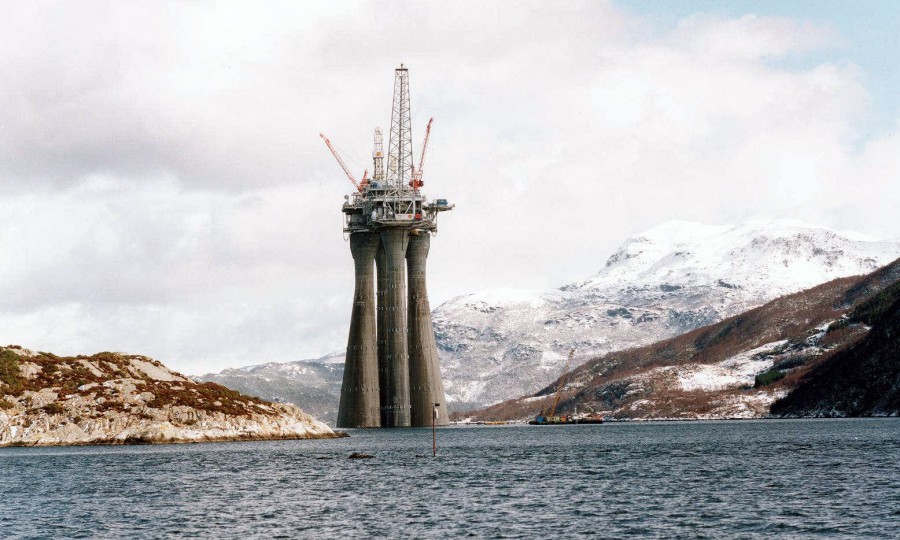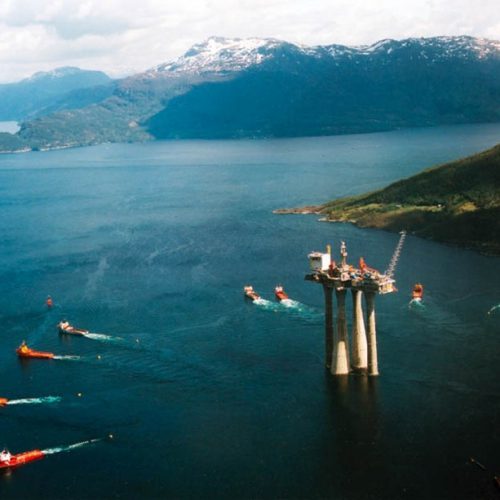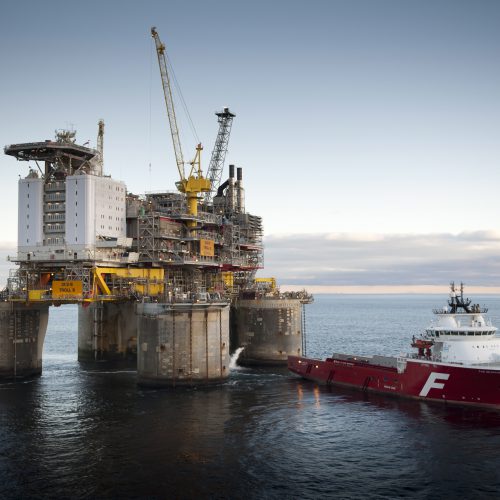Norway
Troll West Floating Oil-Production Platform
Year: 1999
Location: Norwegian Sea, Norway
Country: Norway
Owner Builder: Statoil
Contractor: Kværner Concrete Construction
Designer: Kværner Concrete Construction
Problem / Solution
The Troll West floating oil-production platform is operating at the Norwegian sea in the oilfield with the same name 70 km north west of Bergen. The concrete structure is installed at a water depth between 315-340 metres. Exposed to a harsh marine environment, the design life requirement for the structure is more than 50 years.
To give the construction enough buoyancy, it was planned to install an extra floater unit. Research and studies concluded that use of concrete with lower density would solve the problem. During the construction period, there was developed and utilised a new concrete were natural coarse aggregate was partly replaced by LWA (Light Weight Aggregate). The MND (Modified Normal Density) concrete has a density reduction of about 10%, but still maintain most of the mechanical properties from ND (Normal Density) concrete.
Experience
The reduced weight is achieved by replacing some of the natural coarse aggregate with lightweight materials made of expanded clay. The other constituents are the same as used for ND concrete of high strength.
The objective of the research project (SINTEF 92-93) was to determine and document the effect on mechanical properties. The results revealed a slightly reduced compressive strength, reduced E-modulus and fracture energy, and slightly increased tensile strength while replacing some of the coarse aggregate by LWA. The density was reduced by 200 kg/m3 by replacing 50% of the natural coarse aggregate with Leca 800.
Due to the demands of strength and mechanical properties a.s Norsk Leca developed the Leca 800 for this project. The Leca 800 has a bulk density of 800 kg/m3 for 4-8 and 8-12 mm and gives a concrete with better mechanical properties then the existing Leca 750. The dry particle density is 1450 kg/m3 that is considerably lighter than normal aggregate density at approximately 2600 kg/m3.
Why expanded clay?
A large displacement is necessary to achieve the buoyancy required for a floating platform. The hull of the platform must withstand large hydrostatic pressures. A high strength concrete shell is ideal for such forces. High strength normal density concrete and high strength light weight aggregate concrete was already utilised in many structures in Norway and the experience with the material was well known.
The bottom pontoon slabs and the beginning of shafts were built in dry dock, and then towed out on water for gliding the platform shafts. The Troll West was original planed with HSND concrete. To give the construction enough buoyancy in “out of dock situ”, and to give the structure improved general floating properties an extra floater unit was planned installed. Further studies concluded that use of concrete with lower density had several advantageous properties. During the construction time a new type of concrete where normal coarse aggregate was partly replaced by LWA to reduce the total weight was developed and utilised, the MND concrete.



